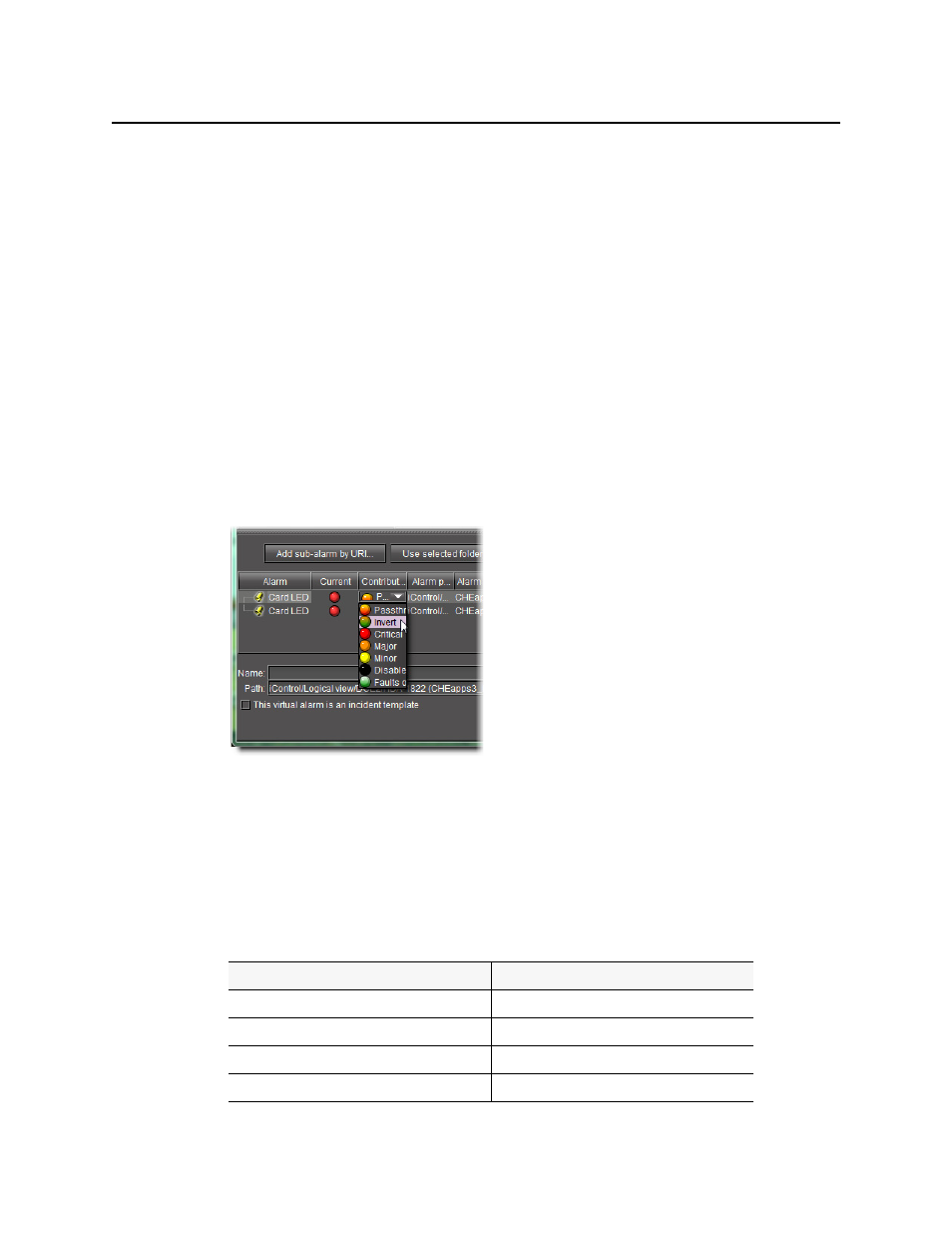Grass Valley iControl V.6.02 User Manual
Page 170

Logs
Creating an Incident Template from the GSM Alarm Browser
160
If there are more than one GSM listed, select a GSM from the list on the left. Its Alarm
Browser appears.
3. In the GSM Alarm Browser, find and select alarms upon which to base your incident
template.
Tip: Shift + click to select multiple alarms, Ctrl + click to make a non-contiguous selection.
4. Click the down arrow.
The alarms appear in the incident template components area.
5. The table displays various details about the sub-alarms you have selected, including their
Contribution, which defines how a sub-alarm will pass its status on to the incident template.
The default contribution value is Passthrough, which means the sub-alarm will pass its
status unaltered to the overall calculation of the incident.
It is possible to override the error status of sub-alarms when they are triggered. This is useful
when, for example, a device is only able to report a status of either
normal
(green) or
error
(red), but you want the error condition to be reflected as a
warning
(yellow) in the incident
template. To change a sub-alarm’s contribution, click in the Contribution column, and then
select the status you want the incident template to use when an error occurs.
For example, if a sub-alarm goes from green to orange or red, but the selected contribution
is yellow, the incident template will interpret it as yellow.
The Invert contribution allows performing a logical NOT calculation on sub-alarms. This
feature can be used, for example, to report alarms from GPI inputs. It can also be used to
handle cases where an error is expected, and not seeing an error is a sign that something
probably went wrong. The table below describes the result of inverting sub-alarms:
Sub-alarm Status
Inverted Contribution
NORMAL
ERROR
MINOR
NORMAL
MAJOR
NORMAL
CRITICAL
NORMAL